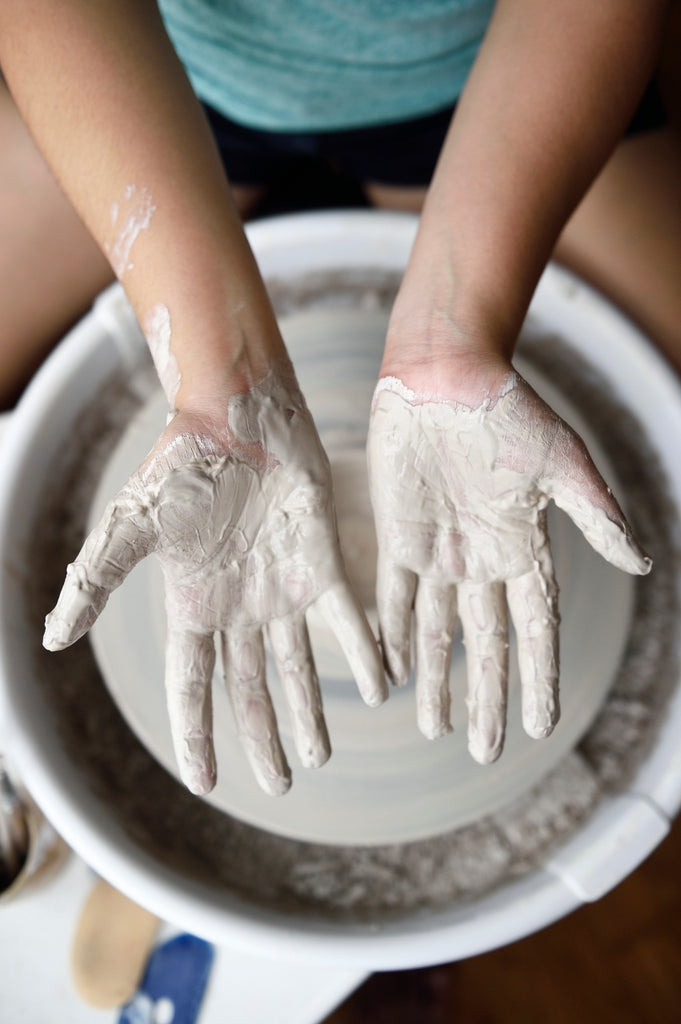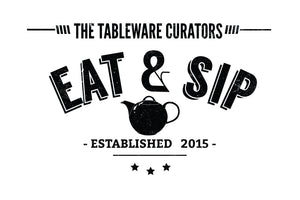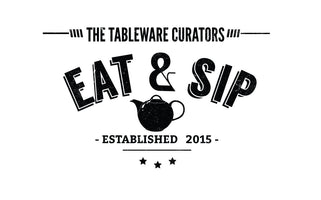
“I am very particular about the functionality and ergonomics of the products I make. The Japanese thought process has inspired me to pay more attention to the relationship between the user and the ware. “ - Gladys Wee, the lady behind local brand 'Serial Kilner'

Yup yup, we are loving that name too! The brand name, Serial Kilner, by itself is already sure to leave a dent in people’s memories but kid you not, Singaporean Gladys Wee, the lady behind the brand, is real serious about her craft.
Over the years, she has experimented with different making methods and styles and has produced a varied yet equally lovely range of tableware products. Currently, her line is heavily inspired by nature, Japanese designs and ergonomics!
 A Japanese tea cup that was decorated using transfer tissue decal
A Japanese tea cup that was decorated using transfer tissue decal

"Attaching the handle took more time than the mug itself. I made this on a whim and randomly painted the insides."
I actually first started pottery way back in secondary school but I really did not cherish and maximise the time I had when I could use all the facilities and materials for free. In 2017, I decided to take up pottery courses to relearn the skills and that was when it really fired up my passion for pottery. From then, there was just no looking back and Serial Kilner was born!
Ever since I was young, I have always had an interest with craft and pottery perfectly encapsulates the concept of craft for me. It is a love-hate, bittersweet relationship with pottery. I love that you can create things from just a lump of clay. I love that it can be unpredictable at times; but at the same time I dislike the lack of control I have over certain aspects of pottery.


You are one of the few potters that make products using almost all the different methods. Why do you alternate between the different methods?
Generally, I do a mixture of throwing, slab work and pinched works! I have to vary my working techniques because pottery is just so physically challenging. When I throw items, I like to do sake cups, tea cups and mugs. I also experiment with marbled works on the wheel.
 Wedged and wheel-thrown to produce the marbling effect
Wedged and wheel-thrown to produce the marbling effect
 Hand-built cups with textured rollers on slabs - the slabs are overlapped on purpose so that it looks folded
Hand-built cups with textured rollers on slabs - the slabs are overlapped on purpose so that it looks folded
When I do slab work, I like to work with patterned wooden rollers to create textures. I make mugs and tea cups with this technique. Slab work is very labour-intensive and every joint is an opportunity for a crack to form but when it goes well, it is really rewarding. As for pinched works, I do this for very groggy clays as they are difficult to throw. I make smaller dishes or saucers for this technique.
 A pinch pot made from brown gritty clay
A pinch pot made from brown gritty clay
I must confess that I have a problem with self-control, so I work with 4-5 types of clay. To me, it is a little too much to work with because I introduce a lot of variations to my work. This has made the progress slower as I spend a lot of time tweaking with factors like glaze compatibility. 'Glaze compatibility' is the ultimate stumbling block for me.
The type of clay, position in the kiln, number of coats, all these factors make glaze firings very nerve-wrecking. I fire everything to cone 6 which is about 1200 degree Celsius.
 Making test tiles after a throwing practice
Making test tiles after a throwing practice
 Two glazes were randomly brushed over for this trinket dish, creating a nice mix of textures
Two glazes were randomly brushed over for this trinket dish, creating a nice mix of textures
Having watched and talked to a lot of other potters, we know that pottery is a long drawn creative process from ideation to conceptualisation, filled with failures along the way. We are just curious, how is your creative process like!
Well, it depends. Sometimes, I do a rough sketch. Sometimes I just weigh balls of clay in similar weight and see where it takes me. I am pretty fluid with this because whenever I do pottery, it is really my own take. I don't really take commissions because it is hard for me to commit to a timeline.
Sometimes I plan the design of the item because I have a need to meet. Things like soap dish, essential oil burners and sponge holders are in my mind right now. I have done some research on Pinterest but I am not really satisfied so I am waiting for an epiphany to happen!
 Her work table!
Her work table!
 Ring dishes waiting to be fired
Ring dishes waiting to be fired
I have also found that if I start off a project by thinking about what other people will like, it usually does not end well. So the genesis of most of my work stems from something that I like and could possibly be found in my home.
I'm heavily influenced by nature, Japanese designs and ergonomics. Also, a strong reflection of my lack of self-control as I just want to try out so many things! I love the Japanese craft and the amount of effort put into creating their wares.



Beside Japanese influence, I have also collected a lot of dried leaves during my travels and weddings, I use them to imprint on slab-work items to give it some texture. It is a nice way to remember a particular occasion too!

I used to think this way. But decorative items can sometimes find a place in a home. I am still not fully convinced but I have introduced mini vase into my work. They are a whole new challenge - especially to trim.
Wow, too many! @sarahpikepottery and @handandfire are great for slab work pottery. I love the design and shapes of @bellhillpottery. And the master, @hsinchuenlin - I could be lost for hours watching his Youtube videos.


I'll explain to them that the amount of work to create a mug is hidden. The throwing itself is simple but there are the other aspects such as trimming, attaching the handle (the bane of my life), bisque-firing, sanding, glazing, glaze firing and the final sanding. Anything can go wrong at any stage such as the much-detested cracks forming after glaze firing!
--
Eat & Sip goes local!
Serial Kilner was one of the makers we collaborated with for the Eat & Sip Open Studio 2019.
PS. Most of the photos used in the article were taken by Gladys herself.


Leave a comment